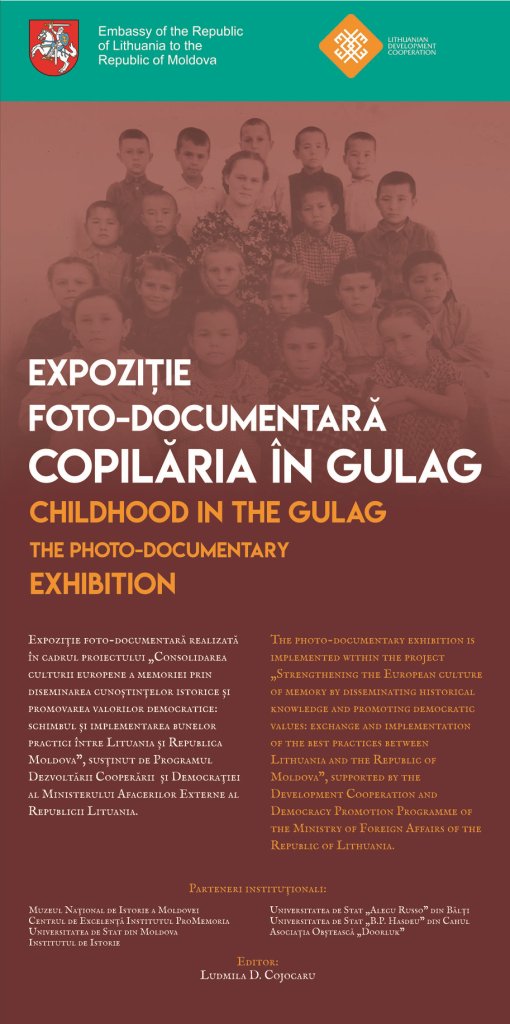
The Museum of Victims of Deportations and Political Repression of MNIM, in cooperation with the Embassy of the Republic of Lithuania, opened on 31 May 2022, the photo-documentary exhibition "Childhood in the Gulag" with the Round Table at the Museum of History and Ethnography in Telenești (Ciprian Porumbescu Street, no. 8, Telenești), with on-site and online participation.
The director of the Museum of History and Ethnography from Telenești, Elena Ilescu, addressed the visitors of the exhibition with a welcoming speech, referring to the importance of knowing the history and memory of the victims produced by the totalitarian-communist regime in the Moldavian SSR among children, especially in the context of today's international events. Dr. Ludmila Cojocaru, head of the Museum of Victims of Deportations and Political Repressions, a branch of the NMHM, presented to the audience the concept and main compartments of the exhibition, recounting from the history of scientific documentation on this photo-documentary exhibition and the novelty of the theme for the field of museography in the Republic of Moldova. The head of the Department of Contemporary History of the Institute of History, Dr. Virgiliu Bîrlădeanu, stressed the importance of the support from European partners in expanding the horizons of historical research in the Republic of Moldova. The schoolteachers and their students present at the opening appreciated the didactic and educational value of this event for the young generation of the Republic of Moldova. The deportees who attended the inauguration found their neighbors and relatives in the images on display.
The exhibition was accompanied by the round table with the participation of history teachers from Telenești district, students of the Alecu Russo State University Bălți and as well as representatives of museographic community from the Republic of Moldova. Of particular interest were subjects related to the circumstances of forced schooling and labor training of children from families of "enemies of the people". The researchers discussed the transgenerational impact of the trauma caused by the totalitarian-communist regime and the need to study it, and museographers reiterated the importance of joining efforts to preserve this historical heritage.
The exhibition brings together about 180 photo-documentary exhibits accompanied by memoirs and archival documents from the collections of the National Museum of History of Moldova, the Edineț Regional Museum, the Museum of the History and Ethnography of Soroca, the Archive of the ProMemoria Institute, archives of local communities of the Republic of Moldova, and, especially, from the family archives of victims of the totalitarian-communist regime in the Moldavian SSR.
The opening of the photo-documentary exhibition "Childhood in the Gulag" at the Museum of History and Ethnography in Telenesti is a tribute to the memory of children who went through the atrocities of the totalitarian communist regime in the USSR, as well as a commemoration of the recent victims among children in the context of the Russian Federation war on the territory of Ukraine.
The photo-documentary exhibition "Childhood in the Gulag" is open to the public from May 31 to June 30, 2022.
The photo-documentary exhibition „Childhood in the Gulag" is realized within the project „Strengthening the European culture of memory by disseminating historical knowledge and promoting democratic values: exchange and implementation of the best practices between Lithuania and the Republic of Moldova" (code VB52-1 ), with the support of The Development Cooperation and Democracy Promotion Program of the Ministry of Foreign Affairs of the Republic of Lithuania.

























































